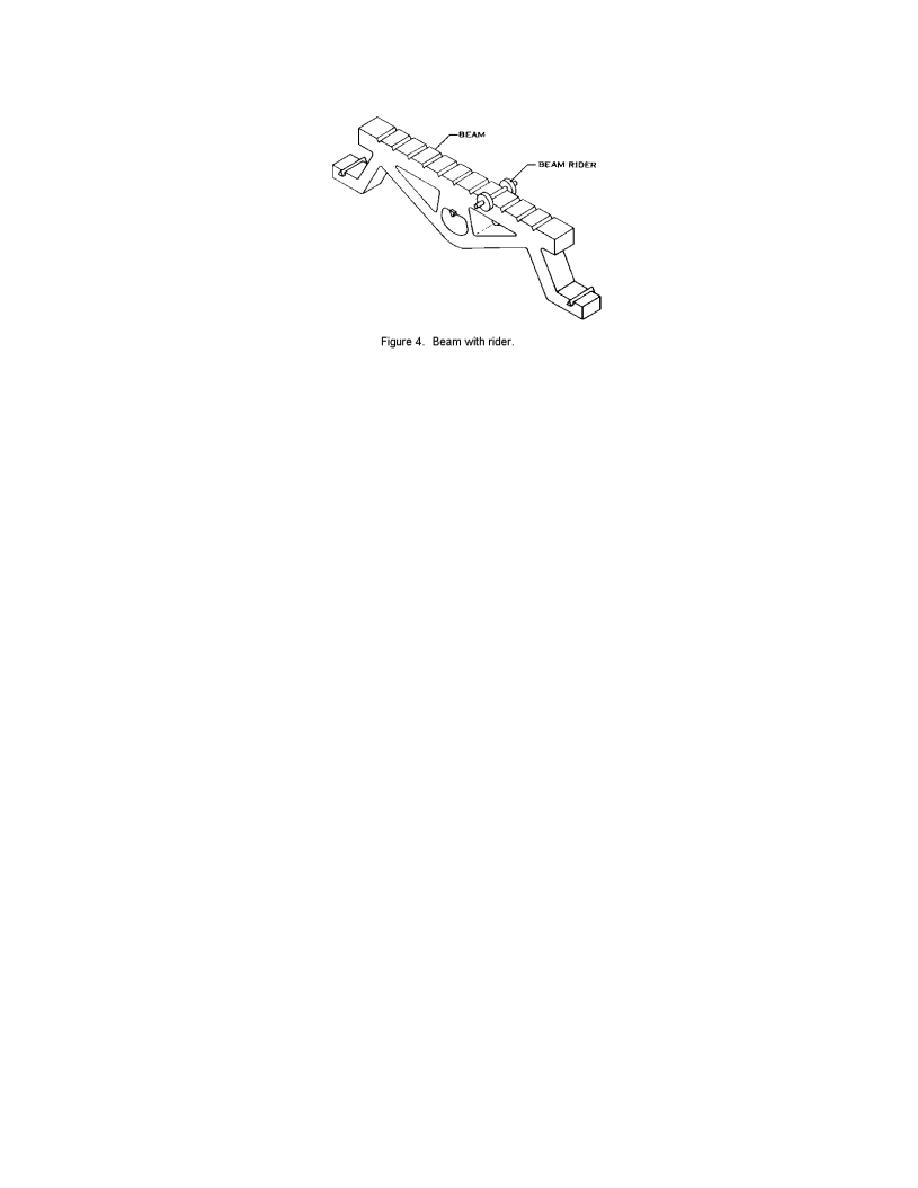
e. You interpret the beam information in figure 4 by noting the location of the rider on
the beam and considering the weight of the rider. If you move a 10-mg rider from zero (at
the center) to 10 at the right side of the beam, it has the same effect as placing a 10-mg
weight on the right pan in figure 3. Leave the riders on the beam to prevent a change in
the center of gravity of the moving system. This change is often caused by the removal
and replacement of riders.
f. Our description of the transposition method of weight measurement needs
clarification. Your first step is the determination of the unknown by the direct weighing
method. Next, you transpose the loads (move the unknown and standard to opposite pans)
so that the unknown weight (mass) is on the right pan. After a second reading is taken,
determine the true weight of the unknown by extracting the square root of the product of
the two weightings. You can approximate the true value of the unknown mass simply by
taking the average of the two weightings (one half the algebraic difference of the two
added to the smaller). Because our description of the substitution method of weight
measurement was quite extensive, an explanation is not necessary.
8. Mass Measurement Systems.
a. In this section conversion of units between the avoirdupois, troy, and apothecary mass
measurement systems is discussed. In addition, we discuss the sensitivity of a balance.
b. Although the kilogram is an accepted standard for mass measurements, most
manufacturers use the avoirdupois (av-erd-e-poiz) systems, which is based on the ton,
pound, dram, and grain. The basis for any of the three systems mentioned is the grain.
The grain, which is the same in all three systems, is defined as being equal to .064798918
grams, or conversely:
15.432356 grains = 1 gram
The relative magnitude of the units in each system follows:


 Previous Page
Previous Page
